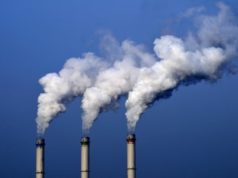
The Facts and Science behind Climate Change
Climate Change is a term used to refer to any significant changes found in measuring the climate that are the direct result of both natural factors and human activities These sustained changes can be in the temperature, wind, precipitation, levels of carbon dioxide, or other climate related measurements
Climate change is the result of both natural processes and human activities. However, human activities are responsible for a much higher portion of the change.
Indicators of Climate Change
There has been a significant amount of evidence pointing towards climate change being an actual phenomenon.
• Increasing levels of carbon dioxide: Carbon dioxide measurements since 2005 have indicated a growing trend in its concentration in the atmosphere. Historically, the level had never exceeded 300 ppm till 1950, yet today the level exceeds 380 ppm.
• Global surface temperatures have been gradually increasing over the last 130 years.
• From 1976 till 2000, Artic sea ice levels decreased at a rate of approximately 11.5% per decade.
• Since 2002 Greenland and Antartica’s Land ice sheets have been losing over 100 cubic kilometers of ice annually.
• Since 2003, sea Level changes have been measured to increase approximately 1.7 mm annually due to the thermal expansion of the water as well as the melting of ice.
Causes of Climate Change
Greenhouse Gases
The majority of climate scientists agree that humans have aggregated the greenhouse effect, which is a major factor in climate change, particularly the current trend of global warming. The greenhouse effect results in warming when the earth’s atmosphere is able to trap more of the heat released from the sun.
The greenhouse effect is exacerbated by certain gases with long half-lives going into the atmosphere. While some gases provide negative feedback mechanisms, these long-lived gases do not react to the change in temperature, forcing the change. For example, while water vapor will increase with higher temperatures, it is more likely to precipitate into clouds and eventually rain. However, carbon dioxide does not do this and ends up further forcing climate change.
Other greenhouse gases besides water vapor include methane, nitrous oxide, and chlorofluorocarbons. Note that all of these are produced in high quantities from human activities. Coal and oil burning have increased atmospheric carbon dioxide concentration significantly. This has also happened to a lesser extent with the process of clearing land for agriculture as well as other industries.
Solar Irradiance
Another cause of climate change is solar irradiance. Unlike the human aggravation of the greenhouse effect, human activity is not responsible for solar irradiance. Solar variability has played a role in the earth’s climate, for example, the Little Ice Age between the 17th to 19th centuries. However, recent studies have suggested otherwise.
For example, the energy output of the sun has either remained constant or slightly increased since 1950. Furthermore, warming on the earth has not been consistent in all the layers of the atmosphere, but rather it has been concentrated in the lower parts while cooling has been observed in the higher areas.

































